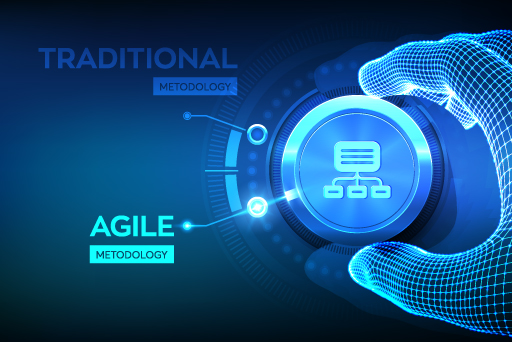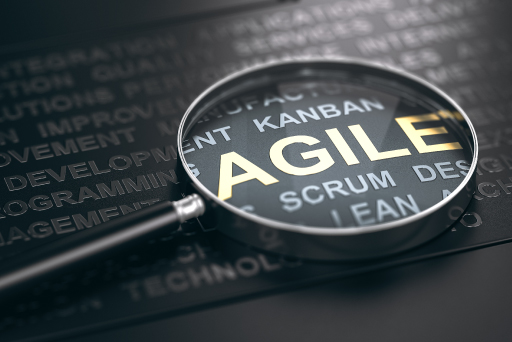
Scrum vs. Kanban: Which Agile Framework is Best for Your Team?
When it comes to software development, Agile methodologies have emerged as a beacon of efficiency, adaptability, and collaboration. Among the various Agile frameworks, Scrum and Kanban stand out as two of the most prominent choices. In fact, both of them are usually the first considerations when thinking of the best agile framework for software development.
The importance of both methodologies informs our article today as we delve into the world of Agile methodologies, dissect the differences between Scrum and Kanban, and help you determine which approach aligns best with the needs and dynamics of your team. Please, read on!
What is Agile?
Before discussing the best agile framework for software development, it is critical to understand what the term Agile connotes. Agile is a dynamic and iterative approach to project management and software development that prioritizes collaboration, flexibility, and continuous improvement.
It stands in contrast to traditional, linear project management methods and embraces change as a natural part of the development process. Agile methodologies enable teams to respond quickly to changing requirements, deliver value incrementally, and maintain a strong focus on customer needs. Let’s delve deeper into the core principles and characteristics that define Agile.
Benefits of Incorporating Agile
There are several benefits businesses can derive from embracing Agile. Some of them are:
- Enhanced Flexibility
Agile allows teams to adapt quickly to changing project needs, ensuring that the end product meets customer expectations.
- Improved Collaboration
Agile methodologies emphasize teamwork, fostering open communication between developers, stakeholders, and customers.
- Faster Time-to-Market
By delivering incremental updates, Agile accelerates the development process, allowing products to reach the market sooner.
- Customer-Centric Approach
Agile frameworks prioritize customer feedback, ensuring that the final product aligns with user needs and expectations.
Types of Agile Methodologies
Within the Agile umbrella, various methodologies have emerged, each tailored to specific project requirements and team dynamics. Although there are various types of Agile methodologies, each with its distinctive features, the most prominent ones are Scrum and Kanban.
- Scrum
Scrum is one of the most widely adopted Agile methodologies. It revolves around time-bound iterations called “sprints,” typically lasting two to four weeks. The Scrum framework emphasizes collaboration, transparency, and continuous improvement. Key elements include daily stand-up meetings, sprint planning, sprint reviews, and retrospectives. Scrum teams work collectively to deliver incremental product increments, fostering a sense of discipline and accountability.
- Kanban
Kanban focuses on visualizing work processes through a Kanban board. Unlike Scrum’s time-bound sprints, Kanban operates on a continuous flow model. Tasks are pulled into the work process based on capacity and priority. The Kanban board helps teams track tasks, identify bottlenecks, and optimize workflow. Kanban’s adaptability and flexibility make it well-suited for projects with changing priorities and variable workloads.
- Lean Software Development
Lean Software Development draws inspiration from lean manufacturing principles. It focuses on minimizing waste, optimizing processes, and delivering value efficiently. This methodology encourages continuous improvement and emphasizes the elimination of non-value-added activities.
- Crystal
The Crystal methodology recognizes that one size does not fit all. It offers a range of methodologies, known as “crystals,” each tailored to team size, project complexity, and priorities. Crystal methodologies prioritize communication, regular reflection, and adaptability based on the unique context of the project.
;
- Dynamic Systems Development Method (DSDM)
DSDM is known for its focus on time-boxed iterations and rapid delivery. It combines the flexibility of Agile with comprehensive project management and governance. DSDM promotes collaboration among stakeholders and the development team throughout the project lifecycle.
- Adaptive Software Development (ASD)
Adaptive Software Development emphasizes embracing change as a natural part of software development. ASD recognizes that requirements evolve, and it encourages teams to adapt to changing circumstances. Iterative development, continuous learning, and collaboration are key principles of ASD.
Differences Between Scrum and Kanban:
Having noted that scrum and kanban are the best Agile framework for software development, what are the areas of convergence between both frameworks?
- Roles and Responsibilities: Scrum defines specific roles like Scrum Master and Product Owner, while Kanban doesn’t prescribe distinct roles, allowing for more flexible team structures.
- Time-Boxed vs. Continuous: Scrum follows fixed time frames (sprints), while Kanban operates with a continuous flow of work.
- Work Planning: Scrum requires detailed sprint planning, while Kanban focuses on a dynamic, pull-based system.
- Work In Progress (WIP) Limits: Kanban enforces WIP limits to prevent bottlenecks, while Scrum’s WIP is implicitly controlled by sprint capacity.
- Change Handling: Kanban accommodates changes at any point, whereas Scrum changes are typically addressed in the next sprint.
Scrum vs. Kanban: Which is Best for You?
Selecting the right Agile framework, whether Scrum or Kanban, is a pivotal decision that can significantly impact your team’s productivity, collaboration, and project outcomes. To make an informed choice, it’s essential to delve into the nuances of both Scrum and Kanban, understand their respective strengths, and evaluate how well they align with your team’s preferences and project requirements.
Let’s start with scrum.
Scrum: Agile Structure and Collaboration
Advantages of Scrum
- Structured Roles and Accountability
Scrum defines distinct roles such as Scrum Master, Product Owner, and Development Team. This clear role delineation ensures that responsibilities are well-distributed and that everyone is aligned with their tasks.
- Effective Planning and Prioritization
Sprint planning sessions facilitate in-depth discussions about project scope, priorities, and deliverables. This level of planning ensures that the team focuses on high-priority tasks during each sprint.
- Incremental Development
Scrum’s sprint structure promotes incremental development and regular releases. This approach allows stakeholders to see progress and provide feedback early and often.
- Continuous Improvement
Sprint retrospectives encourage teams to reflect on their processes and identify areas for improvement, fostering a culture of continuous learning and enhancement.
Consider Scrum if:
- Your team thrives in an environment with structured timelines and well-defined roles.
- Collaboration and teamwork are essential, and your team benefits from regular meetings for alignment and feedback.
- Your projects can be broken down into manageable chunks that can be completed within sprint cycles.
Kanban: Flexibility and Continuous Flow
Advantages of Kanban
- Visual Workflows
Kanban boards provide a visual representation of work stages, making it easy to track progress, identify potential bottlenecks, and optimize the flow of tasks.
;
- No Fixed Time-Boxes
Unlike Scrum, Kanban doesn’t impose fixed time frames. Work is pulled based on capacity, allowing for a continuous and steady stream of tasks.
- Adaptability
Kanban’s lack of strict time-boxes and predefined roles offers the flexibility to accommodate changes and shifting priorities without the constraint of a sprint cycle.
- Reduced Work in Progress (WIP)
Kanban enforces WIP limits, preventing teams from taking on too much at once. This leads to better focus and improved task completion rates.
Consider Kanban if:
- Your team prefers a more fluid and adaptable approach to project management.
- Workloads vary, and you need to accommodate frequent changes and shifting priorities.
- Your projects require a continuous flow of tasks with minimal interruption.
Making an Informed Choice
Both Scrum and Kanban offer unique advantages and that why they are regarded as the best agile framework for software development. The decision between the two depends on your team’s dynamics, project characteristics, and preferred level of structure. Carefully evaluating these factors will help you make an informed choice that not only streamlines your project management but also enhances collaboration, productivity, and project outcomes.
Whether you lean towards Scrum’s disciplined structure or Kanban’s adaptive approach, Tezza Business Solutions is here to guide you through the implementation process and ensure your team’s success in the world of Agile methodologies.
Contact us today to discover how our expertise can help you navigate the Scrum vs. Kanban decision and tailor an Agile framework that elevates your software development projects to new heights.

